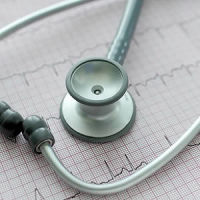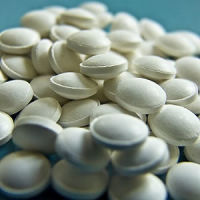Although the utility of high-sensitivity cardiac troponin (hs-cTn) assays remains at an investigational stage in cardiac electrophysiology, studies to date have suggested value as a prognostic biomarker in atrial fibrillation and as a screening marker for patients at high risk of sudden cardiac death, according to a review published in The American Journal of Cardiology.
Cardiac arrhythmias remain a significant source of cardiovascular morbidity and mortality with an overall prevalence of 5.3 percent in the general adult population and a prevalence of up to 40 percent among patients attending cardiology clinics. Although many demographic and clinical variables have been associated with the future development of cardiac arrhythmias and their complications – most notably stroke, heart failure, and sudden cardiac death (SCD) – the prognostic value of these variables is often limited in clinical care. In this context, biomarkers may provide useful screening and prognostic information for cardiac electrophysiology (EP) providers.
This review focused on the prognostic role of hs-cTn assays in cardiac arrhythmias and their sequelae. Researchers reviewed the current literature on hs-cTn and its impact on various arrhythmia disease states.
Troponin - Potential Advantages
Hs-cTn has several potential advantages over conventional EP biomarkers. For example, hs-cTn assays are extremely specific for cardiac myocyte damage, are measurable in minute concentrations even among asymptomatic persons, and troponin is a widely available, familiar, and intuitive test for most cardiologists and general physicians.
Atrial fibrillation (AF) is by far the most common cardiac arrhythmia, affecting more than 2.2 million adults in the U.S. Recognising the potential for biomarkers to improve the clinical prediction of incident AF, investigators have studied the utility of hs-cTn in improving the discrimination and calibration of AF prediction. For example, two large prospective cohorts have demonstrated a modest improvement in AF risk prediction using hs-cTn in the general U.S. population.
Although hs-cTn has been demonstrated to increase following catheter ablation procedures, whether it has prognostic utility in predicting AF recurrence or other adverse outcomes in the postablation setting is unknown. Also unknown is whether hs-cTn has any causal relation to AF or whether it is simply a marker of the underlying substrate, namely atriopathy and fibrosis, resulting in greater burden of AF and AF recurrence.
Future Research
Research to date suggests a number of promising hypothetical EP applications of hs-cTn assays: (1) hs-cTn has modest utility in predicting new-onset AF and AF sequelae in the general population, and may especially improve prediction of AF in high-risk populations, potentially guiding early treatment and prevention strategies and anticoagulant allocation; and (2) hs-cTn assays could augment the screening of patients at-risk for SCD (e.g., persons with family history of SCD or those with hypertrophic cardiomyopathy).
"These hypothetical applications require further investigation and future large, well-powered studies demonstrating meaningful improvement in clinical outcomes are required. The latter is particularly important as the goal of measuring a biomarker should not only be to assess risk but also to determine whether the biomarker can alter the pretest risk threshold in a cost-effective way that can result in an efficacious change in clinical management," the authors noted.
Source: The American Journal of Cardiology
Image Credit: Pixabay
References:
McCarthy, CP et al. (2017) High-Sensitivity Troponin as a Biomarker in Heart Rhythm Disease. American Journal of Cardiology; doi: 10.1016/j.amjcard.2017.01.032
Latest Articles
atrial fibrillation, troponin, cardiac electrophysiology, prognostic biomarker, screening marker
Although the utility of high-sensitivity cardiac troponin (hs-cTn) assays remains at an investigational stage in cardiac electrophysiology, studies to date have suggested value as a prognostic biomarker in atrial fibrillation and as a screening marker for



























